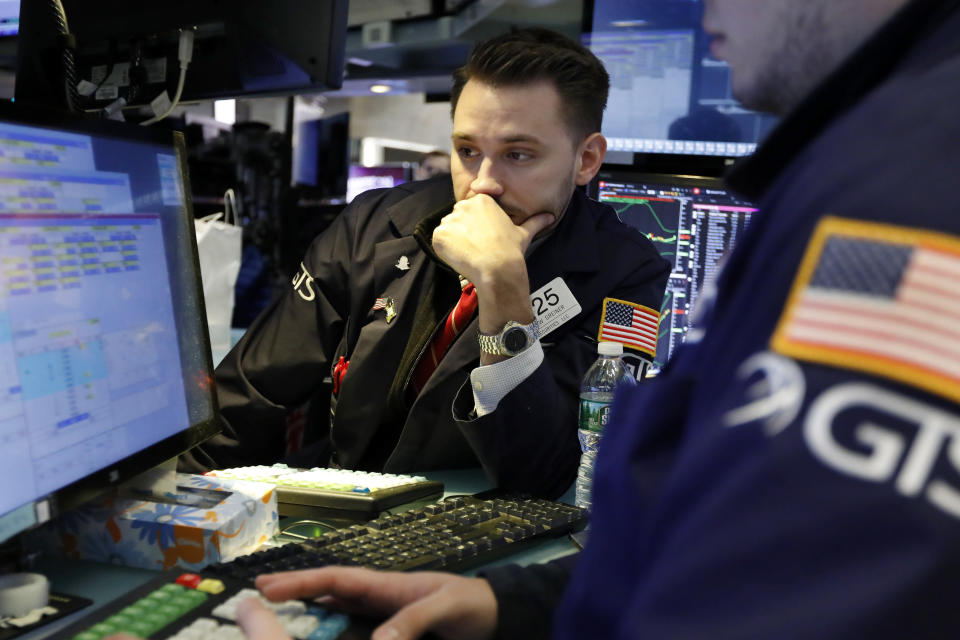2019's biggest winners were 2018's biggest losers
There’s an interesting characteristic that the best performing stocks of 2019 share: They were smoked in December 2018.
What goes down must go up? Apparently.
This is the focus of a new research note released by DataTrek Research co-founder Nick Colas, a veteran Wall Street strategist.
Here are the best performing S&P 500 (^GSPC) stocks so far in 2019:
Xerox (XRX): +54%; December 2018’s return: -37.7%
Delphi Technology (DLPH): 47%; December 2018’s return: -16.2%
HanesBrands (HBI): +46%; December 2018’s return: -21.2%
Mattel (MAT): +45%; December 2018’s return: -28.2%
Xilinx (XLNX): +41%; December 2018’s return: -7.9%
Chipotle (CMG): +41.5%; December 2018’s return: -8.8%
Hess (HES): +41%; December 2018’s return: -24.8%
Notice a pattern?

“Many of 2019’s biggest winners to-date are simply those names that got really clobbered in December 2018,” Colas wrote. “That’s how you end up with Xerox as the S&P’s top stock for the year. This is a name that hasn’t gone anywhere for half a decade, after all.”
What about the worst performing stocks of 2018? Have they done well so 2019?
The answer is yes — and here are the names:
General Electric (GE): +27%
Mohawk Industries (MHK): +11%
Invesco (IVZ): +13%
Western Digital (WDC): +26%
L Brands (LB): +3%
“I think the central lesson here is that chasing year-to-date winners is going to be a losing strategy from here,” Colas told Yahoo Finance. “Lots of investors chase momentum, either as a conscious strategy or inadvertently by looking at what’s worked lately.”
Just because a stock has worked over a two-month period, doesn’t mean the trend will continue, he added.
—
Scott Gamm is a reporter at Yahoo Finance. Follow him on Twitter @ScottGamm.
Follow Yahoo Finance on Twitter, Facebook, Instagram, Flipboard, LinkedIn, and reddit.
More from Scott:
2019 may be the year of tariffs against European auto imports
The world is on an 'irreversible path to an economic downturn': Nomura
The years of easy money in the stock market are coming to an end
These 2 forces could prompt companies to cut capital expenditures

 Yahoo News
Yahoo News 

